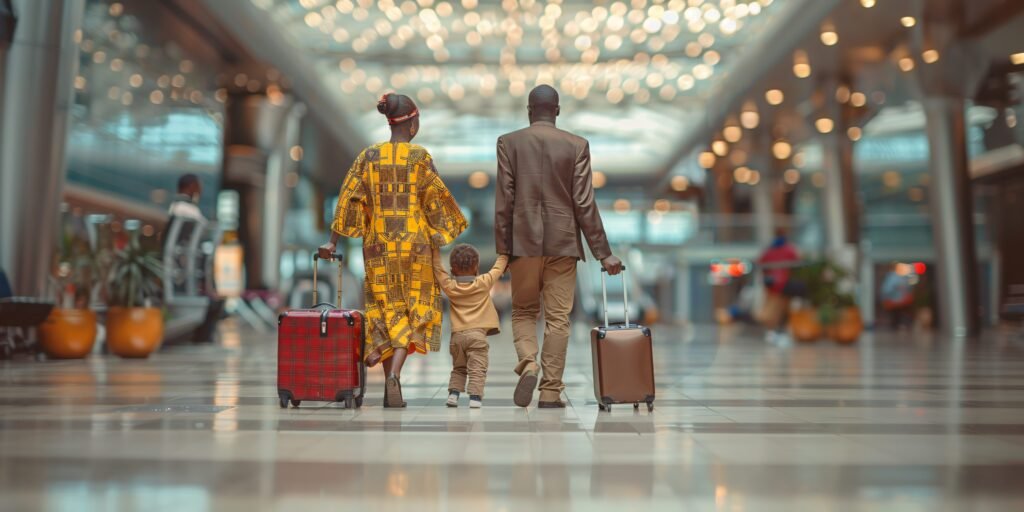Wayfarer Weekly: Global Travel and Cultural Pathways
Wayfarer Weekly provides an extensive look into the structured world of travel, offering an understanding of how pathways, routes, and exchanges shape the broader global landscape. With international connections expanding and travel systems adapting, Wayfarer Weekly highlights the way information, networks, and cultural exchanges intersect. This article explores how travel continues to function as a central framework for movement, examining air, sea, and land routes alongside cultural and institutional dimensions that define global connectivity.

Travel Systems in the International Framework
Wayfarer Weekly outlines how international travel systems function as interdependent structures. Airports, seaports, highways, and railway stations act as nodes that sustain global exchanges. Each of these systems operates within established guidelines, contributing to orderly mobility and regulated flows of travelers.
The consistency of these systems ensures that mobility is supported by recognized checkpoints, scheduling frameworks, and rules that standardize routes. Wayfarer Weekly notes that this interconnectedness demonstrates not only the technical side of travel but also its role in maintaining steady global exchanges.
Cultural Pathways and Exchanges
In addition to routes and transportation structures, Wayfarer Weekly focuses on how cultural pathways form part of the global travel framework. Travelers encounter diverse languages, traditions, and historical contexts, which are exchanged across borders. These pathways function not as isolated events but as recurring exchanges embedded in structured patterns of mobility.
Cultural frameworks, whether through heritage sites, shared rituals, or symbolic landmarks, become extensions of global travel routes. Wayfarer Weekly observes that cultural exchange runs parallel to transportation systems, building a broader picture of global movement.
Air Travel and Its Expanding Networks
One of the most consistent features highlighted in Wayfarer Weekly is the growth of air travel. Major hubs connect continents, linking passengers across multiple time zones with predictable scheduling. International organizations regulate air travel to ensure consistency, creating frameworks that extend across carriers, airports, and destinations.
Air travel demonstrates how efficiency and consistency in scheduling allow millions of passengers to move through structured systems every day. This network builds on predictable connections, forming a backbone for international exchanges.
Maritime Routes and Ferry Networks

Wayfarer Weekly also addresses maritime travel, which continues to function as a vital system for the movement of people and goods. Ferries, cruise networks, and long-distance shipping lines contribute to the structured connectivity of regions separated by water.
Maritime travel maintains a steady role in intercontinental routes, particularly where airports or land-based systems cannot extend coverage. In this way, ferry and cruise networks act as connectors that supplement broader frameworks of travel.
Land-Based Pathways and Regional Travel
Alongside air and sea, land-based travel remains a significant aspect of global connectivity. Wayfarer Weekly describes how highways, railways, and cross-border routes support regional exchanges and everyday mobility.
These systems highlight how structured guidelines, from toll systems to border checkpoints, keep regional pathways organized. Long-distance trains, urban transit systems, and highways work together to provide consistency in regional travel, reflecting the role of infrastructure in building accessible pathways.
Borders, Rules, and Travel Guidelines
Every structured travel system operates within frameworks of rules and checkpoints. Wayfarer Weekly outlines how visa requirements, border notices, and identification systems regulate movement.
These guidelines balance the flow of travelers with established procedures, ensuring that international mobility follows consistent standards. Travel documents, entry permits, and digital registration systems demonstrate how structure and regulation are integral to the global movement of people.
Technology and Digital Travel Systems
Wayfarer Weekly notes how technology increasingly plays a role in shaping the global travel framework. Digital ticketing systems, online reservations, and real-time mapping services expand access to travel updates.
Technology also supports international monitoring through digital visas, biometric verification, and security systems at major checkpoints. These elements highlight how travel infrastructure is expanding beyond physical networks into digital frameworks that maintain consistency and accuracy.
Information Flows and Real-Time Updates
An important component of global mobility is the flow of information. Wayfarer Weekly emphasizes that travel networks rely on structured communication—flight notices, route schedules, and border announcements keep travelers informed.
Real-time updates ensure that travelers adapt to changing conditions within structured guidelines. Information sharing builds reliability into the system, where consistent updates align with established routes and planned schedules.
Regional Variations and Global Contexts
Although systems function under international guidelines, Wayfarer Weekly identifies regional variations in travel. Each region applies its own administrative structures, cultural dimensions, and infrastructural capacities.
From advanced metro systems in major urban hubs to developing transport corridors in rural regions, these variations reveal the diversity of travel frameworks. However, they remain interconnected under the broader global structure of mobility.
Institutional Roles in Travel Systems

Wayfarer Weekly outlines how organizations and institutions coordinate travel. Airlines, rail authorities, maritime agencies, and international governing bodies ensure that systems remain structured and functional.
These institutions also set the standards that regulate travel documents, flight corridors, port schedules, and regional checkpoints. In this way, institutional frameworks guarantee consistency across diverse travel systems.
Economic and Logistical Dimensions
Beyond cultural and institutional factors, Wayfarer Weekly observes the logistical importance of travel systems in supporting global movement. Routes, schedules, and infrastructures are maintained not only for mobility but also for sustaining global exchanges.
Airports, ports, and rail hubs serve as logistical centers where coordination between travel and trade occurs. These dimensions ensure that systems remain aligned with broader frameworks of connectivity.
Travel as a Framework of Connectivity
Wayfarer Weekly presents travel as more than individual journeys—it is a framework that maintains structured global pathways. Each journey, whether by air, land, or sea, fits into a system supported by institutions, guidelines, and cultural exchanges.
This framework builds a collective network, demonstrating how international travel connects people, cultures, and systems within a larger global structure.
Conclusion
Wayfarer Weekly demonstrates that travel is an interconnected framework where systems, guidelines, and exchanges form structured pathways across regions. Air travel links continents, maritime routes connect coastlines, and land-based networks provide regional access, all functioning under consistent guidelines. Cultural pathways add depth to these systems, while technology and institutions ensure they remain organized and reliable.
In the global context, Wayfarer Weekly highlights how travel frameworks create a consistent structure for mobility and exchange. By examining international routes, cultural pathways, and institutional roles, Wayfarer Weekly underscores the importance of travel as a defining element of global connectivity.